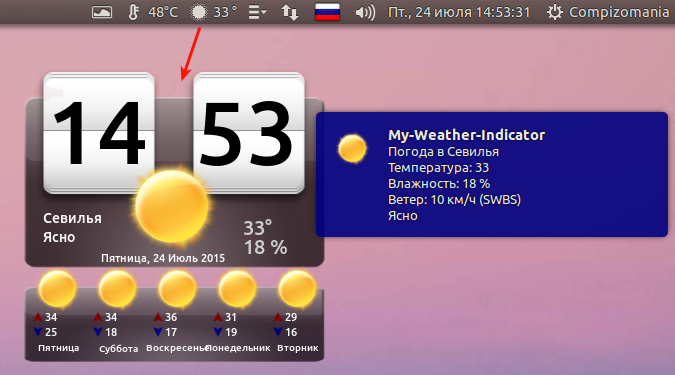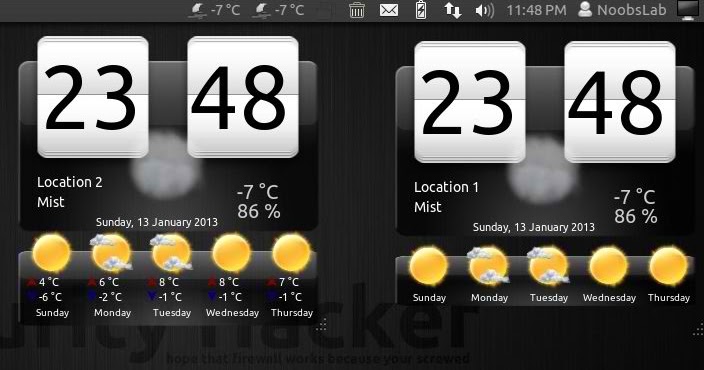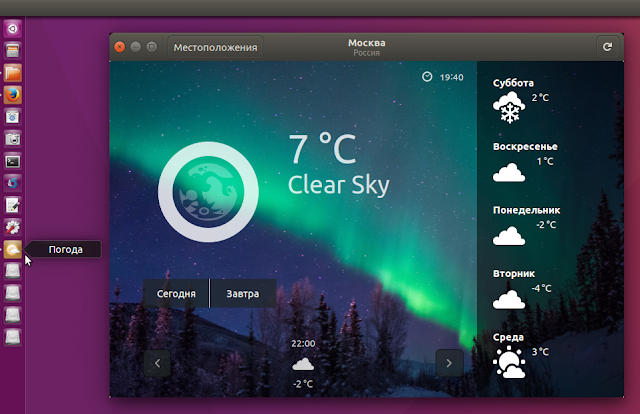


UBUNTU 16.04 SIMPLE WEATHER INDICATOR INSTALL
Once install is complete you can go ahead and launch the indicator from the Unity Dash or GNOME Applications Overview.
UBUNTU 16.04 SIMPLE WEATHER INDICATOR UPDATE
To install or upgrade the indicator run this command: sudo apt update & sudo apt install indicator-weather To add the PPA run this command: sudo add-apt-repository ppa:kasra-mp/ubuntu-indicator-weather Simple Weather Indicator is available to install on Ubuntu 14.04 LTS, 16.04 LTS, and 17.04 via the project’s official PPA. Install Simple Weather Indicator on Ubuntu That said, there is a of native weather extensions for GNOME Shell available to install, some offering more advanced and interactive UIs than the simple, more refined indicator. Ubuntu has, wisely, chosen to support application indicators and legacy tray items for the time being. If you’re a big fan of the Simple Weather Indicator you will be pleased to know that you can continue to use it on Ubuntu 17.10 with GNOME Shell. That said he is committed to providing bug fixes and minor releases for the duration of Ubuntu 16.04 LTS’ support. Simple Weather Indicator v1.0 is the last major update the applet will receive according to a blog post announcement by the developer. The latest version of the Python-based weather forecast tool adds a number of nifty new features, including: Like, for example, Simple Weather Indicator, which happened to see a new release this weekend. The Debian Package of the Day weather article has more details about using the weatherutility.Although Ubuntu is switching to GNOME Shell in its next release plenty users plan to continue using the Unity desktop.Īnd if there’s one type of optional extra that makes the Unity desktop a little more useful it is application indicators. See the update-motd man page for more options available to update-motd. Hopefully the local-weather example demonstrates the flexibility of pam_motd. You should now be greeted with some useful information, and some information about the local weather that may not be quite so useful. Next, create a symlink to /etc/update-motd.d/98-local-weather: sudo ln -s /usr/local/bin/local-weather /etc/update-motd.d/98-local-weatherįinally, exit the server and re-login to view the new MOTD.

Weather indicator, current weather status is displayed directly in Chrome. Make the script executable: sudo chmod 755 /usr/local/bin/local-weather The Maverick theme is designed to have a resemblance to the Linux These Are. # Replace KINT with your local weather station. # Prints the local weather information for the MOTD. may not be available.Ĭreate /usr/local/bin/local-weather, a simple shell script to use weather with your local ICAO indicator: #!/bin/sh However, local weather information for all locations outside the U.S. This can be determined by browsing to the National Weather Service site.Īlthough the National Weather Service is a United States government agency there are weather stations available world wide. In order to find local information you will need the 4-character ICAO location indicator. The weather utility uses METAR data from the National Oceanic and Atmospheric Administration and forecasts from the National Weather Service. For example, to add local weather information:įirst, install the weather-util package: sudo apt install weather-util You can add your own dynamic information to the MOTD. The output of the scripts is written to /var/run/motd, keeping the numerical order, then concatenated with /etc/motd.tail.

Pam_motd executes the scripts in /etc/update-motd.d in order based on the number prepended to the script. Update-notifier-common: provides information on available package updates, impending filesystem checks (fsck), and required reboots (e.g.: after a kernel upgrade). You can run landscape-sysinfo manually at any time. Graph this data and manage this system at Usage of /: 30.2% of 3.11GB Users logged in: 1 Yet the package also includes the landscape-sysinfo utility which is responsible for displaying core system data involving cpu, memory, disk space, etc. Landscape-common: provides the core libraries of landscape-client, which is needed to manage systems with Landscape (proprietary). This information is obtained and displayed using a couple of packages: When logging into an Ubuntu server you may have noticed the informative Message Of The Day (MOTD). Multi-node Configuration with Docker-Compose


 0 kommentar(er)
0 kommentar(er)
